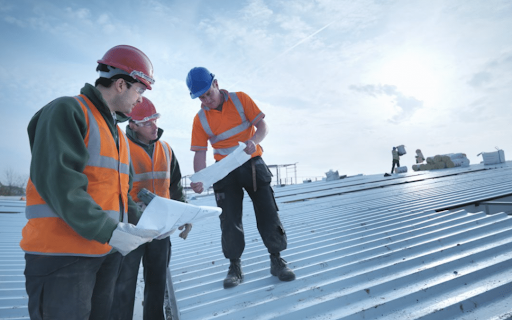In the ever-evolving landscape of construction and building maintenance, roof repair has become a pivotal area of innovation. With advancements in materials and techniques, modern roof repair has transformed, offering enhanced durability, efficiency, and aesthetic appeal. This article explores the latest innovations in roof repair, focusing on materials and techniques that are reshaping the industry.
Business Roof Repair: Embracing Innovation for Longevity
Advanced Roofing Materials
The commercial roofing sector has witnessed a significant shift towards innovative materials designed to address specific challenges faced by businesses. One notable advancement is the introduction of high-performance membranes, such as Thermoplastic Olefin (TPO) and Ethylene Propylene Diene Monomer (EPDM). These materials are renowned for their durability, energy efficiency, and resistance to environmental stressors. TPO, for instance, offers excellent UV resistance and reflects solar heat, which can significantly reduce cooling costs for businesses. EPDM, on the other hand, is valued for its flexibility and long lifespan, making it ideal for various commercial applications.
Another innovation in business roof repair is the development of reflective coatings. These coatings are designed to improve energy efficiency by reflecting solar radiation, thereby reducing the heat absorbed by the building. This not only enhances the comfort of the indoor environment but also lowers energy consumption, contributing to cost savings and environmental sustainability.
Seamless Integration with Modern Technology
The integration of technology in roof repair has led to the advent of smart roofing solutions. These solutions incorporate sensors and monitoring systems that provide real-time data on the roof’s condition. For example, moisture sensors can detect leaks and water accumulation, allowing for prompt intervention before significant damage occurs. Additionally, thermal imaging technology can identify heat loss and insulation deficiencies, helping businesses address issues proactively and maintain optimal energy efficiency.
Enhanced Installation Techniques
The installation of modern roofing materials has also benefited from innovative techniques. One such technique is the use of advanced adhesive systems and automated application methods. These systems ensure a more precise and efficient installation process, reducing the likelihood of errors and enhancing the overall performance of the roofing system. Automated systems, such as robotic applicators, are particularly valuable for large commercial projects, where they can streamline the application of coatings and membranes, improving consistency and reducing labor costs.
Roof Repair: Advancements in Materials and Methods
Durable and Sustainable Materials
In residential and small-scale roof repair, innovation has centered around durability and sustainability. Modern roofing materials, such as synthetic slate and composite shingles, offer excellent performance while being environmentally friendly. Synthetic slate mimics the appearance of natural slate but is lighter, more cost-effective, and requires less maintenance. Composite shingles, made from a blend of materials, offer superior resistance to weathering and impact, making them a popular choice for homeowners seeking long-lasting solutions.
Additionally, the development of green roofing systems has gained traction. Green roofs, which involve the installation of vegetation on the roof surface, provide numerous benefits, including improved insulation, reduced stormwater runoff, and enhanced aesthetic appeal. These systems contribute to the overall sustainability of buildings and create additional green spaces in urban environments.
Innovative Repair Techniques
The repair of existing roofs has also seen advancements through innovative techniques. One such technique is the use of liquid-applied roofing systems. These systems involve the application of a liquid coating that cures to form a seamless, waterproof membrane. Liquid-applied systems are highly versatile and can be used to repair various types of roofing materials, including metal, asphalt, and modified bitumen. They offer a cost-effective solution for addressing leaks and surface damage without the need for a full roof replacement.
Advancements in Roof Inspection and Maintenance
The approach to roof inspection and maintenance has evolved with technological advancements. Drones equipped with high-resolution cameras and thermal imaging sensors are now commonly used for roof inspections. These drones provide detailed visual and thermal data, allowing professionals to assess the condition of the roof more accurately and identify potential issues before they escalate. This technology not only improves the efficiency of inspections but also enhances safety by reducing the need for manual roof access.
Conclusion
The field of roof repair has experienced significant innovations in materials and techniques, driven by advancements in technology and a growing emphasis on sustainability. From high-performance membranes and reflective coatings in business roof repair to synthetic materials and green roofing systems in residential applications, the industry continues to evolve, offering more durable, efficient, and environmentally friendly solutions. Embracing these innovations ensures that roofs not only meet the demands of modern building requirements but also contribute to long-term performance and sustainability.

